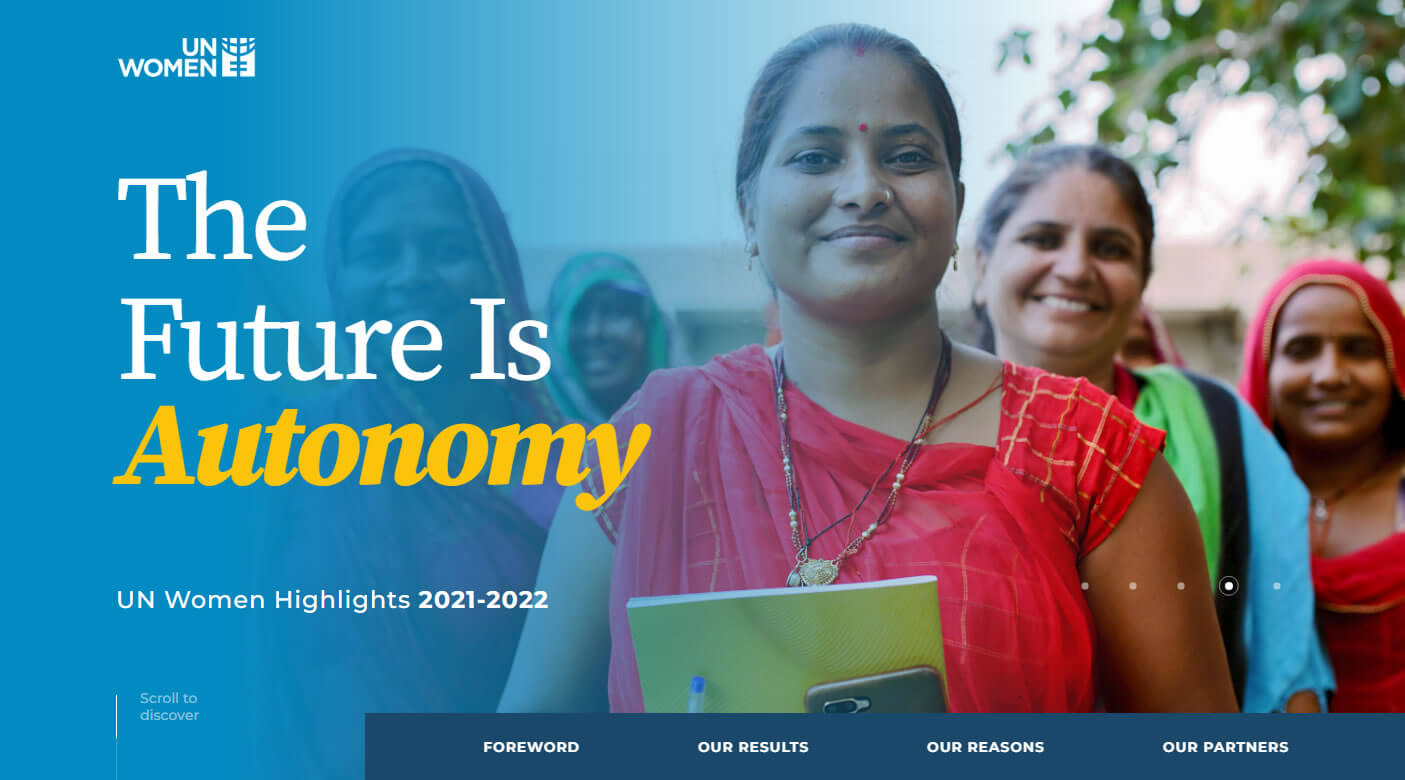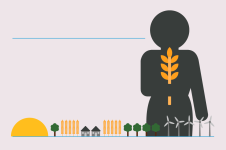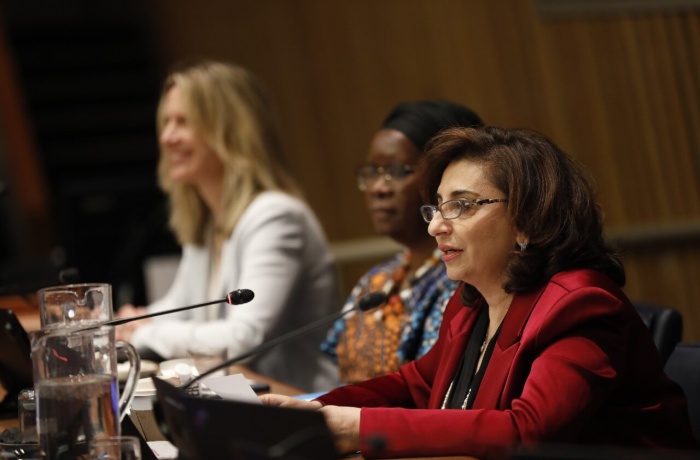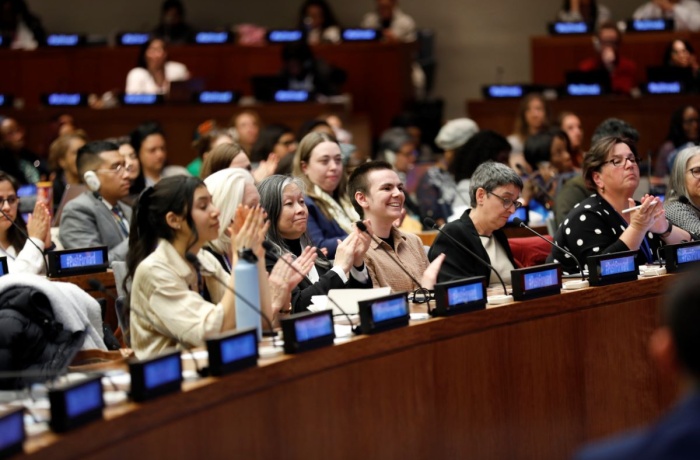Women in Afghanistan: From almost everywhere to almost nowhere
Mona Chalabi illustrates the freedom of movement for Afghan women before and after the Taliban takeover of August 2021.
UN Women partnered with Mona Chalabi to illustrate the scope and the severity of the restrictions on women and girls’ access to public space and public life in Afghanistan. In international treaties this is referred to as “freedom of movement”. Together, these illustrations show the sheer speed at which progress on gender equality can vanish, and then reverse in a matter of months, while the world watches.
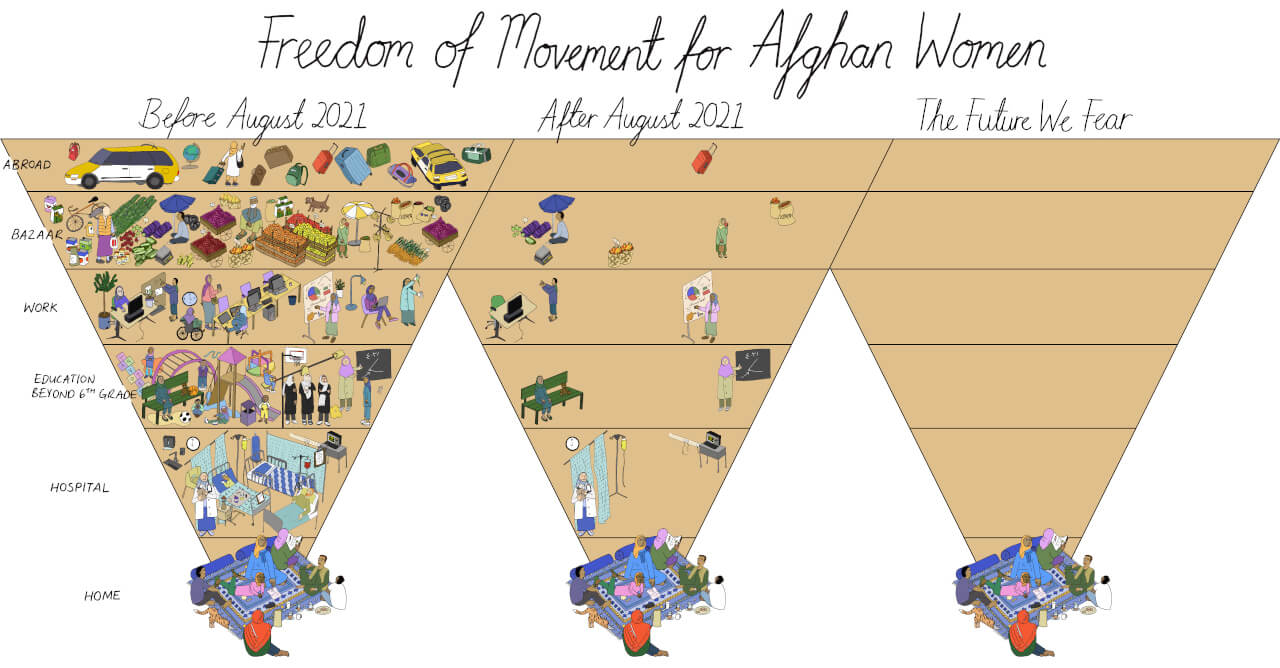
[ See a larger version of the image (757KB). ]
There are social movements that shake the world. The Afghan women’s rights movement is one of them. Afghan women’s fight for freedom and equality spans generations. Their most fierce battle has been for visibility and presence in public life—for their names to be known, their voices to be heard, and their presence to be acknowledged and valued.
A few statistics [1]:
In 1920, the first school for girls opened in Afghanistan [2]. In 1991, 7,000 women enrolled in higher education, 230,000 girls were in schools, 190 women were professors, and 22,000 women taught in schools across the country [3].
By the end of the Taliban’s first rule in 2001, less than one million Afghan children were in school, and none of them were girls [4].
In 2004, a new constitution enshrined gender equality and reserved 27 per cent of seats in parliament for women. By 2021, Afghan women had secured 69 out of 249 seats in parliament, women were negotiating peace across the country, and laws were in place allowing women to include their names on their children’s birth certificates and identification cards. There was a Ministry of Women’s Affairs, an independent human rights commission, and a law-making violence against women a crime. But more than this, women were visible—from law, politics, and journalism, to sidewalks, parks, and schools.
Over the last two years, the Taliban have issued 80 edicts, 54 of these directly target women and girls [5]. The roll backs started as soon as they took power in August 2021, when they ordered women to stay at home because their foot soldiers were “not familiar with seeing women outside the house and were not trained to respect women” [6]. One year into their rule, and it was clear gender segregation and restricting women’s movement remained the cornerstone of their vision for society. The so-called “Taliban 2.0” never eventuated. On women’s rights, Afghanistan went back to the future.
We are now two years into their rule. Women have been banned from going to parks, gyms, and public bathing houses. They have been stopped from pursuing education beyond the sixth grade. Their ability to work outside of health and education is all but prohibited. The cumulative effect of the Taliban’s edicts and behaviours has largely resulted in the imprisonment of women within the walls of their homes.
The question is, what more can be taken away? On 15 August 2024, on 15 August 2050, what spaces will be left for Afghan women to access? What will this visual look like?
For many women across the world, walking out your front door is an ordinary part of life. For many Afghan women, it is extraordinary. It is an act of defiance. Despite all these challenges, women have found ways to carve out pockets of hope. Afghan women are still forming new civil society groups to address community needs, running businesses, and providing health, education, and protection services. Afghan women will not give up their right to live full lives, equal in dignity. They will not accept living in a world where they are not worthy of living the same life as a man.
And neither should we.
Afghanistan is not the only country in the world where women’s rights are being rolled back. But what is happening in Afghanistan is an alarm bell for all of us because it shows how decades of progress on gender equality and women’s rights can be wiped out in months. It is a clarion call to everyone that the fight for women’s rights in Afghanistan is a global fight, and a battle for women’s rights everywhere.
What we all do—or fail to do—for women and girls in Afghanistan is the ultimate test of who we are as a global community, and what we stand for.
Notes
[1] The Afghan women’s rights movement is not bound to a timeline but spams over generations since the beginning of what we know today as Afghanistan. The following years are just some selected milestones in the history of the country.
[2] Afghanistan Quarterly Journal, 2018.
[3] Kaplan, 1992.
[4] https://wiisglobal.org/afghan-womens-education-under-the-taliban-2/#_ednref2
[5] Source: https://feminist.org/our-work/afghan-women-and-girls/taliban-edicts/




